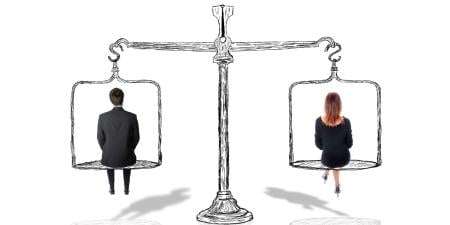Your brand-new family doctor walks into the waiting room, spots you, and hurries over to introduce himself. He slaps you cheerfully on the shoulder and then booms: "Hiya, Bob! I'm Dr. Hotchkiss! What's up"1?
One of the more enduring changes of the "dotcom" revolution of the 1990s is the movement toward casual dress in the workplace. Suits and ties are out. Polo shirts and khakis are in. Ninety percent of US companies allow some form of casual dress, up from 62 percent in 19922. Traditionally staid employers such as law firms and banks are enthusiastically jumping on the casual bandwagon, though some still require formal attire for interactions with clients. Employers argue that it is a perk that improves worker morale, yet costs nothing.
This "casualization" in the workforce is but one component of a larger cultural trend in which social relations and forms of address are less formal than they were a generation ago. Adult peers typically dispense with formal titles of address (eg, Mr. or Ms.) and move directly to a more familiar first-name basis. This may reflect a certain democratization. It also may reflect the influence of youth culture, where informality and spontaneity are greatly prized.
Is society better off with more formal or informal styles of dress and address? Is this an ethical issue or one of mere etiquette? Does what we think of as "mere etiquette" have some ethical significance? Consider the opening scenario. Is the physician's etiquette likely to affect the therapeutic relationship?
Casualization has indeed influenced dress and behavior within the health care arena. Nurses long ago shed the white uniform and cap for more practical and comfortable garb. Certain television shows, such as ER, have helped popularize the loose-fitting surgical scrub as the uniform de rigueur in medicine. Some places, however, attempt to draw the line in casualization. One academic medical center reinforces the notion that casual dress may not be in the best interest of the patient-physician relationship:
A physician's appearance serves as a powerful, nonverbal symbol that affects communication between doctor and patient. Patients react negatively to jeans, athletic shoes and socks, scrub suits, clogs, prominent ruffles, dangling earrings, and excessive aftershave lotion or perfume. Patients express preference for well-trimmed hairstyles3.
Physicians have mixed responses to these matters, as exemplified in an exchange of letters in the Newsletter for the American Society of Anesthesiologists4. One physician claimed, "You have to 'talk the talk,' 'walk the walk' and 'dress the dress' if you want to be recognized as a physician." Another stated, "When it comes to our attire, anesthesiologists need to stop being so egocentric: we dress for our patients and for the professionals with whom we work, not for ourselves." And a third added, "How many times has the perception that we are slobs affected interactions with the public, other physicians, hospital administrators and health care organizations?" But a dissenting voice felt that "[n]o amount of gaudy, expensive dress will ever make some anesthesiologists professional. . . . [A] physician can act professionally regardless of what he or she is wearing."
The effect of dress on patients has even been studied by physician researchers at West Virginia University. Dr. Dorian Williams, associate professor in the Department of Family Medicine, led a study in which they surveyed 209 patients, 62 medical students, 63 residents and 109 faculty members. Dr. Williams hypothesized that patients wanted a more professional look among residents, and his study tended to prove him right. Even more interesting, physicians and patients alike favored white coats and name tags. Nonetheless, Dr. Williams argues that a physician's specialty and the length of the patient-physician relationship matter. ''In psychiatry you can overdo it too. In anesthesiology . . . a scrub suit works fine. If you are a community-based doctor and your patients know you, casual dress may be OK. But certainly if you don't have an established relationship with the patient and you are working for someone else, representing their institution, the patients want the doctor to look professional,'' he said4.
The range of perspectives represented in these comments points to the larger question: Does casualization compromise the therapeutic relationship? There are those who argue that physicians' professional attire and behavior play an instrumental role in their communication with patients, inspiring confidence and credulity and indicating respect and a desire to please. If this is indeed the case, casualization may indicate a significant change in how physicians choose to relate to their patients--one that could have consequences for patient care and deserves to be studied further. On the other side of the debate are individuals who claim appearance and attitude are mere matters of social etiquette. They insist that a physician's medical abilities are what really matters; questions of dress and address are frivolous criteria by which to judge a professional responsible for promoting medical well-being.
Whether casualization in the doctor-patient interaction is one-sided or reciprocal may color general reactions to the trend. If the relaxing of social etiquette norms is exercised only by physicians, it could reinforce the power differential that already exists between patient and physician, rather than foster a more comfortable environment for all. Although the white coat worn by physicians has long been criticized as a symbol of power that skews the medical encounter, Williams' study seems to suggest that patients appreciate seeing physicians wearing it. This reflects the fact that non-professionals expect professionals to don certain kinds of uniforms in order to contextualize the relationship and give it the gravity and respect it deserves. For instance, seeing a judge in street clothes rather than judicial robes would probably send the wrong message to litigants--that the judge is just another person who does not have special duties with regard to the proceedings. These social expectations and psychological responses are evoked by other professional uniforms, whether they are worn by police officers, members of the military, or clergy. The style and formality of the dress set the relationship apart from ordinary business encounters, reminding physicians of their professional obligation and reinforcing the patient's confidence in the individual clinician who, as denoted by his or her attire, is a designated representative of a trusted profession.
References
-
CareFirst BlueCross BlueShield. Etiquette for the doctor's office. Available at: http://www.carefirst.dohealth.com/dohealth/member/selfcareWellness/vitWellness.asp?WellID=514. Accessed April 23, 2001.
-
Moore J. Curbing the urge to dress to excess: HR managers ask how casual is too casual for the workplace. Star Tribune. June 18, 1998: D1.
-
Department of Internal Medicine, The University of Iowa College of Medicine. Orientation Syllabus 2000-2001: Policies and Procedures. Available at: http://www.int-med.uiowa.edu/education/Clerkship/Policies.htm. Accessed April 23, 2001.
-
Graham-Walker A. It's what you wear, not how you wear it, doctor: US hospital studies effect your clothing has on the trust, confidence of others. Medical Post. November 28, 2000;36(40):52.



